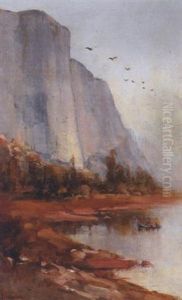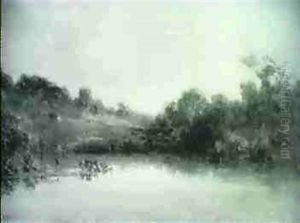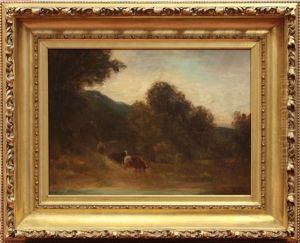Edward Rufus Hill Paintings
Edward Rufus Hill was an American painter known for his contributions to the Post-Impressionist movement in the United States. Born in 1862, Hill's early life was marked by a profound interest in the arts, which led him to pursue a formal education in painting. Although specific details about his early education are scarce, it is known that he studied with several prominent artists of his time, absorbing the influences that would shape his distinct style.
Hill's work is characterized by its vibrant use of color and dynamic brushwork, elements that became hallmarks of the Post-Impressionist movement. He was deeply inspired by the landscapes around him, often painting scenes that captured the unique beauty of the American countryside. His paintings often depicted serene landscapes, imbued with a sense of tranquility and a deep appreciation for natural beauty. This focus on landscape painting placed him within a tradition of American artists who sought to capture the essence of the country's wilderness and rural areas.
Throughout his career, Edward Rufus Hill exhibited his work widely, gaining recognition and acclaim for his contributions to American art. His paintings were shown in several prominent exhibitions, including those at the Pennsylvania Academy of the Fine Arts and the National Academy of Design, reflecting his status as a respected artist within the American art community. Despite his success, Hill remained dedicated to developing his artistic vision, constantly experimenting with new techniques and approaches to painting.
Hill's legacy is preserved in the collections of various museums and galleries, where his work continues to be appreciated for its contribution to the development of American Post-Impressionism. Edward Rufus Hill passed away in 1951, leaving behind a body of work that continues to inspire and captivate audiences with its beauty and vibrancy. His dedication to capturing the American landscape and his innovative approach to painting have secured his place in the history of American art.


















